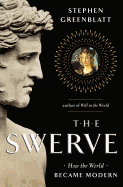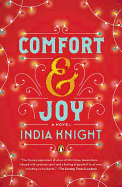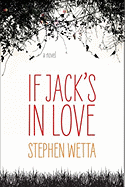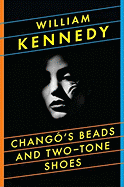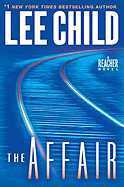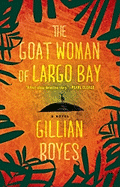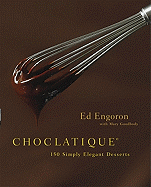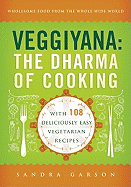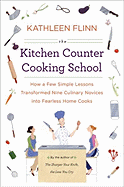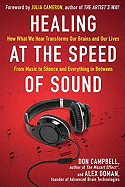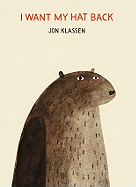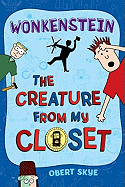Friday, September 30, 2011
On an abstract level, it's easy to admire the company's achievement. Who could imagine even five years ago a device with a color screen weighing less than a pound that enables a person to instantaneously download any of nearly 20 million books, songs, movies, TV shows, newspapers and magazines to it--and then immediately read, watch or listen to them?
 At the same time, it's easy to fear Fire. That's because Amazon uses proprietary systems and formats for all its e-reader devices, which means that if you own a Kindle or a Fire, you have to buy all your e-books from Amazon. (In addition, the Fire operates in a way that allows Amazon to collect all kinds of information about how and where users browse and buy online.)
At the same time, it's easy to fear Fire. That's because Amazon uses proprietary systems and formats for all its e-reader devices, which means that if you own a Kindle or a Fire, you have to buy all your e-books from Amazon. (In addition, the Fire operates in a way that allows Amazon to collect all kinds of information about how and where users browse and buy online.)By contrast, if you own e-readers like the Barnes & Noble Nook or Sony Reader or Kobo, you can buy e-books from anyone--including many traditional bookstores that offer major publishers' books at the same price as Amazon. Likewise, the many e-reader apps like Google Books and Blio play well with others. (Most of these apps are free and work very nicely, based on our experience.) So if you prefer reading e-books and you use any e-reader or app that's not an Amazon product, you can still support bookstores that do so much to help us learn about books and authors. With Fire or Kindle, however, you have to make an unnatural choice between e-books and your favorite bookstore down the street.
Many in the book business worry about power becoming concentrated in the book world. Amazon likes to play rough: recently it spent $5 million to force a referendum in California on a law it didn't like. (The state and Amazon have since come to a compromise.) Publishers say quietly that since Borders's collapse, Amazon has become even more aggressive about wanting better deals. It's also set up its own publishing division and may well publish some books that aren't available outside the Amazon e-cosphere. A closed system doesn't bode well for the general book universe, which for its many quirks and flaws, still brings reading pleasure to tens of millions of people.
Happy reading! --John Mutter
Comfort & Joy
by India Knight
Clara Dunphy wants Christmas to be perfect, but her family and friends consistently fudge it up in India Knight's impending holiday treat, which has already been named "A Book of the Year" in the U.K. by the Guardian and the Independent. Knight is no stranger to publishing--she's a columnist for London's Sunday Times, as well as a novelist. Her heroines are often flawed women seeking the perfect job, perfect husband or, in the case of Clara, the perfect Christmas.
Comfort & Joy traces three Christmases in the life of Clara Dunphy--a divorced and remarried mother of three whose family is nuttier than a box of cashews. Through arguments, love and drunkenness, Clara strives to relive the holiday glories of her own childhood, which is easier attempted than accomplished.
Knight uses long, conversational sentences with comic kick. The narration is hilarious from line one; be prepared to giggle. Although awkward hilarity often ensues, meaningful observations on marriage, divorce and child-rearing are offered as well, as Clara struggles to remain friends with ex-husbands and allies with pathetic, self-centered gal pals.
Throughout the chaos, Clara ponders the meaning of Christmas. Is it really about where you are and the traditions you hold or is it about who you're with? And is family really about blood relation or is it about love? Find out in this quick read that's bound to get you in the holiday spirit... martini in hand or not. -- Sara Dobie, blogger at Wordpress
Discover: Family runs deeper than blood in this first-person narrative of one woman's uproarious quest for the perfect Christmas.
If Jack's in Love
by Stephen Wetta
"Pop beating up Mr. Kellner was, I think, the beginning of it all. We bear primal anxieties about our fathers, and it's tough to witness your pop beat up a pipe-smoking gentleman from the next street over."
Those lines sum up a pivotal moment in Stephen Wetta's debut novel, If Jack's in Love. When Jack Witcher--12 years old but narrating from an older, wiser place--witnesses his unemployed mechanic father challenge their more sophisticated neighbor to an ill-advised fight, a chain of events is set in motion that defines the rest of the story and Jack's adolescence.
It's 1967, and Jack and his family are social pariahs in their small Southern town. His father is rough, his long-suffering mother is kind but ugly, and his brother is a long-haired, pot-smoking, Doors-listening hippie with violent tendencies. But Jack is smart and sensitive, and he finds a friend in Mr. Gladstein, another outsider and the town's only Jew. With Mr. Gladstein's help, Jack is determined to win the love of his beautiful classmate Myra. But then Myra's older brother is murdered--and Jack's older brother is the prime suspect.
The cultural growing pains of the '60s mirror Jack's own coming-of-age as he struggles to reconcile his love for Myra with his brother's likely guilt. While Wetta shies away from giving the story the depth it could have and has a tendency to resort to clichés, If Jack's in Love is a charming, lively debut. --Hannah Calkins, blogger at Unpunished Vice
Discover: Stephen Wetta's sweet and strangely funny debut about 12-year-old Jack Witcher, his star-crossed love, and the nasty small-town politics of 1960s Virginia.
Changó's Beads and Two-Tone Shoes
by William Kennedy
In the latest novel in his Albany Cycle, Pulitzer Prize-winner William Kennedy (Ironweed) tells the somewhat convoluted story of Daniel Quinn, an Albany journalist trying to fill the large shoes of his historian grandfather and numbers-running father. The story begins with Quinn hanging out in Havana in the 1950s, vying for an interview with the rebel Castro.
Havana in the '50s is a wild, musical place--a hodge-podge of gamblers, whores, politicians, soldiers, revolutionaries, gangsters and wealthy sugar plantation owners. Quinn runs into Hemingway drinking rum at the infamous El Floridita. Papa introduces Quinn to the hot and beautiful Renata--20 years Quinn's junior and a rebel sympathizer. Their conversation follows in the stilted declarative shortcuts of Hemingway prose, even as the writer's advice pours out: "Keep [exaggerating] and soon you'll have a novel... remove the colon and semicolon keys from your typewriter... shun adverbs, strenuously." Rarely does a serious novel get an opportunity like this to make fun of all the Hemingway writing clichés.
Eventually Quinn marries Renata and takes her back to Albany. Kennedy then jumps to 1968, the year of Bobby Kennedy's killing, when New York's racially divided capital city has become a battleground. Through the words of the brilliant character of Quinn's father, the dementia-addled George, Kennedy is able to bring to life the history of the city, against which the plot takes on the heat of local revolution. Ultimately a homeless black man with a gun and a defrocked radical priest band together to prevent a riot, "the pair of them on an odyssey of Franciscan politics and leftover jazz."
With such a broad range of characters and a story crossing 20 years of social struggle in two countries, Kennedy works to tie all the loose ends together. That he largely succeeds is perhaps the result of all his years of journalism and fiction--years spent practicing many of the very same Hemingway precepts that he ironically mimics in the first chapters. –-Bruce Jacobs, founding partner, Watermark Books & Cafe, Wichita, Kans.
Discover: Pulitzer Prize-winner William Kennedy mixes Hemingway, Castro and Santería spirits in Havana with Black Power and Bing Crosby in his well-worked home city of Albany.
Mystery & Thriller
The Affair
by Lee Child
Ever since Jack Reacher hitchhiked his way into crime fiction in the 1997 novel Killing Floor, many fans have wondered why he became a drifter in his mid-30s after spending his entire life--born and raised--in the U.S. Army. The Affair finally details the case that prompted Reacher to leave the military police behind, if not his crime-fighting career.
It's 1997 and Reacher is sent undercover to Carter Crossing, Miss., to shadow the official army investigator in the case of a civilian woman murdered near a base. Reacher's role is to observe and make sure the situation is handled properly because of tension between the soldiers and the townies. Reacher realizes he's on a doomed mission when he discovers there have been three similar murders in the area and the army is ordering him to destroy evidence. He gets help from the lead investigator, Duncan Munro, and the beautiful sheriff, Elizabeth Deveraux, but can he trust either one?
The Affair is written in first person so readers really get a glimpse of how Reacher's mind works (some of the novels are written in third, which has its advantages, but this reviewer prefers the more personal treatment). The younger MP Reacher is not much different from the drifter we already know and love; i.e., he kicks butt and has sex. Readers are only reminded of the story's setting when VHS tapes and film cameras are mentioned. It's amusing to see the origin of Reacher's later traveling style when he goes undercover as a bum and learns he doesn't need anything more than a foldable toothbrush. Child also includes references to Reacher's brother, Joe, that will lead up to the beginning of Killing Floor. Newbies can start their affair with Reacher with this latest installment, but those who have read the series may find poignancy in these foreshadowing allusions. --Elyse Dinh-McCrilllis, freelance writer/editor, blogging at Pop Culture Nerd
Discover: The case that ended Jack Reacher's military career but freed him up to fight crime in his own inimitable way.
The Goat Woman of Largo Bay
by Gillian Royes
Gillian Royes, a Jamaican-born educator, editor and consultant, has made a wonderful foray into the world of fiction and mystery with The Goat Woman of Largo Bay, the first in a series featuring Shadrack Myers. Although Shad has almost no formal education, he's an intelligent and observant man, known as the smart-man in the small town of Largo Bay, Jamaica.
Shad bartends for Eric Keller, an American who has never been quite the same since his hotel, located on a small island off Largo Bay, was destroyed in a hurricane. One day, while he's working at Eric's bar, Shad notices something moving among the hotel ruins. At first he thinks it's a goat, but binoculars reveal that it's a woman.
Why is a woman alone on the island? How did she get there? What is she up to? Curious, Shad and Eric set out to confront her. The fiercely independent Simone piques their interest. She offers to pay rent, so Eric lets her stay.
Shad's slightly shady past comes back to confront him, however, when some criminals he knows start asking questions about the woman. He's kept busy trying to figure out what Sharpie and Tiger are up to, while simultaneously delving into Simone's secrets and keeping his wife and four kids out of the situation.
Told mostly from Shad's point of view in Jamaican patois, The Goat Woman of Largo Bay will transport you to another world--a beautiful, tropical world with a rather seedy underbelly. --Jessica Howard, bookseller, Bookmans Entertainment Exchange
Discover: The wily Shadrack Myers, a crime-solving bartender in a beautiful little Jamaican town.
Food & Wine
Choclatique
by Ed Engoron
In the introduction to Choclatique, chef, chocolatier and food consultant Ed Engoron writes, "There is no edible substance more fantastic than chocolate." The 150 recipes that follow are a testament to this statement, evidence of one man's belief that there truly is no better ingredient--no better food, even--than chocolate. Luckily for the rest of us chocolate lovers out there, the recipes are also an invitation to join Engoron in his love for the complex, rich flavors of chocolate, from baked goods to candies to drinks.
Engoron begins with the basics: several varieties of ganache, which form the basis for nearly every recipe in the book; instructions for what types of ingredients to look for; and how to make chocolate curls successfully. From the building blocks, Choclatique then moves on to the fun stuff: the cookies, the candies, the fudges, the soufflés and yes, even a cocktail or two.
The recipes here are peppered with anecdotes, useful tips and quick guides to gluten-free, dairy-free and vegan options. Gorgeous photographs throughout the text are guaranteed to have mouths watering and pages dog-eared, ready for the baking that is sure to come. Even a quick flip through the pages will leave you eager to plan a chocolate-themed feast, if for no other reason than to have an excuse to make two pounds of dark chocolate ganache. --Kerry McHugh, blogger at Entomology of a Bookworm
Discover: The ultimate ode to chocolate--more than 150 recipes featuring the world's favorite dessert ingredient.
Veggiyana: The Dharma of Cooking: With 108 Deliciously Easy Vegetarian Recipes
by Sandra Garson
A few years ago, while studying dharma in Nepal, Sandra Garson noticed the sickly state of the children and her mission became clear: to spread the message that "ordinary food is extraordinarily powerful." This mission took the form of "Veggiyana, a vegetable path that leads to liberation from unnecessary physical suffering, freeing people to engage positively with the world, since those who feel good can do good."
In her introduction, Garson contemplates the gift of survival that has been bequeathed through the years: "If we had not inherited the way to preserve milk as yogurt or leach toxins out of soybeans, boil bread (which is the original description of making noodles)... if all this knowledge had been hoarded, monopolized, or buried like other treasure, instead of being freely shared, none of us would be here now, enjoying life."
Garson presents 108 recipes, each chosen to represent "reach-fors: beloved items we choose again and again because they can always be trusted to be just right" and because they represent GUSTO: Generosity (ingredients that cause no harm), Universality (affordable, attainable ingredients), Simplicity (common pans and little time required), Tasty and Offering (worthy of being served to loved ones).
Although Veggiyana is inspired by Buddhist principles and is enriched by short essays on a range of related topics throughout, it also stands as a user-friendly, original cookbook. --Kristen Galles from Book Club Classics
Discover: An eclectic and wholly accessible celebration of the food that nourishes the body as well as the spirit.
The Kitchen Counter Cooking School: How a Few Simple Lessons Transformed Nine Culinary Novices into Fearless Home Cooks
by Kathleen Flinn
Despite earning a diploma from Le Cordon Bleu, food writer Kathleen Flinn (The Sharper Your Knife, the Less You Cry) wasn't sure about her next step--until she followed a stranger around the supermarket one night, convincing her to trade a cart full of heavily processed foods for an array of fresh, healthy produce and meat. The experience led her to wonder: How many aspiring home cooks rely on convenience foods for lack of basic kitchen knowledge?
Flinn gathered nine novice cooks from a variety of culinary and cultural backgrounds, did a thorough inventory of their kitchens and spent a year teaching them fundamental cooking skills--from how to chop an onion to baking fish en papillote (in paper) to impress guests. She also educated her students on where food comes from, how to mix and match flavors, the pitfalls of additive-laden foods and the crucial importance of an often-overlooked ingredient: confidence.
Flinn's clear, engaging style combines anecdotes from class sessions, tidbits about the history and industry of producing various foods and helpful budgeting and cooking tips, from basic knife skills to the shelf life of spices. Each chapter concludes with a simple recipe, easily reproducible in readers' kitchens. Though Flinn is a foodie, her students are anything but--which is why their stories, and their culinary triumphs, will resonate with anyone who's ever stared into a packed refrigerator and wondered what on earth to cook for dinner. --Katie Noah Gibson, blogger at Cakes, Tea and Dreams
Discover: A chef training nine novices in basic cooking skills, helping them realize they really can cook healthy, delicious meals for their families.
History
The Swerve: How the World Became Modern
by Stephen Greenblatt
In 15th-century Italy, Poggio Bracciolini landed a position as apostolic scriptor for popes. As Stephen Greenblatt (Will in the World) shows so brilliantly, Poggio did not achieve fame by his hand alone, though; he earned it with his nose for scavenging for books.
Poggio dug through the libraries of far-flung monasteries in search of copies of tomes written during the glory days of the Roman Empire. During the winter of 1417, in a German monastery, Poggio found a long poem entitled "De rerum natura" ("On the Nature of Things") by Titus Lucretius Carus. He recognized the poem's aesthetic qualities immediately, had a scribe make a copy (books did not leave the monastery under any circumstances) and sent the copy to his Florentine friend Niccolò Niccoli.
In his poem, Lucretius had distilled the work of the Greek philosopher Epicurus. "The highest goal of human life is the enhancement of pleasure and the reduction of pain," Lucretius wrote, in addition to noting that the universe was not created for or about humans. After a thousand years in the shadows, the words of Lucretius struck the writers and artists of Renaissance Italy like a thunderbolt. Culture, from the sixth century until the 15th, had been operating under the principle that the pursuit of pain trumped the pursuit of pleasure; this poem challenged that central fact of life, along with almost every other element of Christian orthodoxy at the time.
Greenblatt writes with such fluency and facility of the process by which "De rerum natura" reentered the cultural consciousness that we are pushed to consider the alternative: What if Poggio had not found the book in the monastery's library? Greenblatt's tale makes us hyper-aware of our ability now to download any text in a matter of seconds without fear of being drawn and quartered for satisfying our intellectual curiosity. --John McFarland, author
Discover: Every tale of the preservation of intellectual history should be as rich and satisfying as Stephen Greenblatt's history of the reclamation and acclamation of Lucretius's "De rerum natura" from obscurity.
Psychology & Self-Help
31 Dates in 31 Days
by Tamara Duricka Johnson
Dumped and devastated just before her 31st birthday, Tamara Duricka Johnson decided to reinvent her dating life. Worried about her tendency to invest too much, too soon in each new relationship, she came up with a plan designed to put the fun back in dating: a month of first dates, each one featuring a different guy, a different activity, a price limit of $31--and a post on her blog the next day.
Johnson's breezy, candid writing style breathes life into what might otherwise be a sad tale of a woman disillusioned with dating. As she goes on her 30 first dates (many of them blind--and most of them quite enjoyable), she takes a clear look at her past dating mishaps, the cultural pressure to find the perfect mate and the challenges of the big-city dating scene. Readers will enjoy the accounts of each date, complete with awkward moments, honest self-reflection and even a few crushes.
As the end of her project approaches, Johnson creates a blog poll so her readers can help choose her date for Valentine's Day--the 31st date. While the suspense is fun and the promise of a happy ending (or at least a new relationship) is comforting, Johnson has realized something important: she doesn't need a man to feel complete. Readers in all stages of the dating process will find something to cheer for in this witty, wise, heartfelt tale of dating, gaining confidence and finding love. --Katie Noah Gibson, blogger at Cakes, Tea and Dreams
Discover: A thoughtful, honest, often hilarious look at one woman's plan to put the fun back in dating--and discover what she was really looking for in Mr. Right.
Healing at the Speed of Sound
by Don Campbell and Alex Doman
We know what happens when we consume cheeseburgers or cigarettes. But we know less about the effects of a toxic-noise diet. This book aims to change that.
Don Campbell, author of The Mozart Effect (co-author Alex Doman's background is in sound studies), builds on his earlier work by expanding the sound spectrum. He wants us become mindful of all sounds, not just music, because they hold the power to both heal and harm. A whisper can soothe; however, many everyday sounds, such as those emanating from television sets or busy highways, inhibit our capacity to think. To illustrate his point, Campbell shows us how to make sounds suit our natures and environments. He doesn't suggest we listen to Bach all day and, in fact, he sings the praises of total sound breaks. But he wants us to know that everything from how we speak to whether we sing in the shower affects our heartbeat, breathing and brain function. Pleasant noise, he says, "can reduce stress and stimulate cognitive processing and memory in measurable, substantive, and lasting ways."
Campbell goes so far as to say that sound is a "miracle cure." He's a passionate advocate and a persistent marketer. This self-help book's many overt commercial reminders--trademarks atop pages, advertisements for the authors' other work and dozens of website links--strike a distracting chord. Nonetheless, the worthwhile message comes though as clear as a calm voice: this book shows us how to get our audiological veggies. --Tom Swift, author of Chief Bender's Burden.
Discover: Concrete suggestions for how to create a soundtrack for your life that enhances well-being.
Children's & Young Adult
I Want My Hat Back
by Jon Klassen and J Klassen, illus. by Jon Klassen
Hats off to Jon Klassen (Cats' Night Out), who makes a droll statement about morality for all ages with the first picture book that he has both written and illustrated.
"My hat is gone. I want it back," a bear states simply at the story's start. His expression here is the same one he wears on the book's cover. The bear meets a fox: "Have you seen my hat?" The bear's question is printed in black. The fox's response appears in brown: "No. I haven't seen your hat." "OK. Thank you anyway," the bear answers. This exchange sets up the story's structure; the clever design dispenses with the need for quotation marks. Soon the bear meets a rabbit sporting a red triangle on its head. "Have you seen my hat?" "No. Why are you asking me? I haven't seen it," the rabbit replies in red, "I would not steal a hat. Don't ask me any more questions." "OK. Thank you anyway," goes the hero's polite refrain, and on he searches.
Even if young readers make a connection at this point that the bear does not, the suspense builds. The bear meets other creatures, including a deer that asks the bear to describe his hat. That triggers an epiphany. Klassen uses the turn of the page brilliantly for the climax: "I HAVE SEEN MY HAT." The author-artist closes with a visual solution that allows children not ready for a worst-case scenario to assume another outcome. This book's call-and-response form infiltrates the consciousness like song lyrics, and will soon be filling bookstores, libraries and living rooms everywhere. --Jennifer M. Brown, children's editor, Shelf Awareness
Discover: A droll morality tale for all ages starring a bear that tracks down his hat and takes his revenge.
The Name of the Star: Shades of London, Book 1
by Maureen Johnson
In this smart supernatural thriller, Johnson (Suite Scarlett; 13 Little Blue Envelopes) yet again proves herself a master of the YA genre. Rory Deveaux hails from Louisiana and has the accent and the crazy 'gator stories to prove it. When her family moves to England during her senior year of high school, she knows things will be different--but she could never have imagined how different. A Jack the Ripper copycat begins stalking the neighborhood surrounding her London boarding school, and Rory starts to see things no one else can see--things the killer doesn't want her to see. He's coming for her, and neither her newfound abilities nor the people sent to protect her may be able to stop him.
Rory is the right person in the wrong place at the wrong time, a girl made special purely by force of her personality and the circumstances in which she finds herself. Johnson's trademark wit is in full force in this newest series. She balances the everyday drama of teenage life--boys, school, roommates--with a hair-raising plot and keeps readers laughing as well as enthralled. With a sly wink at the paranormal genre as a whole, she crafts something new and engaging. Anglophiles, ghost hunters, detectives-in-training and fans of a good story well told will all want to pick this one up. --Jenn Northington, events manager at WORD bookstore
Discover: A plucky Southern heroine, a string of ghastly murders and a secret paranormal police force in this fun and frightening whodunit set in London.
Wonkenstein: The Creature from My Closet
by Obert Skye
Like so many of us, 12-year-old Rob Burnside keeps all kinds of unwanted junk in his closet, including hundreds of unread books. He's surprised one morning when he hears knocking coming from inside. Suddenly the door pops open to reveal a small, strangely dressed man who appears to be two different people "smashed together." One half is greenish and grunting, while the other half babbles about candy and dances about. After a visit to the library, Rob deduces that this creature is made up of both Willy Wonka and Frankenstein, and dubs him "Wonkenstein." (It's probably no coincidence that Wonk seems inspired by books that have been living in Rob's closet.)
Hilarity and chaos ensue over the course of 16 short chapters featuring Skye's (the Leven Thumps series) own cartoon-like illustrations on every page. This excellent formula enhances some of the book's laugh-out-loud moments, including inopportune belching, embarrassing grown-ups and the antics of Rob's clueless friends. Keeping Wonk a secret proves to be a challenge. But when circumstances unfold to frame the town outcast for a crime he didn't commit, Rob finds the courage to tell the truth with Wonk's help in a comical and gratifying plot twist.
Filled with spot-on commentary and a wince-inducing supporting cast, middle grade guys won't be able to keep Wonkenstein to themselves. The story's ending promises more madcap adventures with another "Wonk." This pitch-perfect offering should appeal to reluctant readers, not to mention the legion Wimpy Kid fans. --Molly McLeod, middle school librarian.
Discover: The hilarious, illustrated adventures of 12-year-old Rob and the creature from his closet, a Willy Wonka and Frankenstein mash-up.


